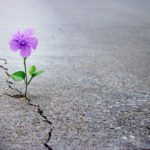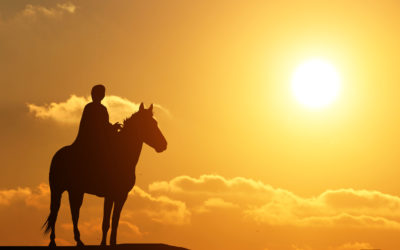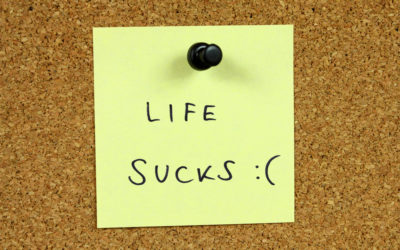When I was 32 years old, I discovered the secret to life. I dropped into a space inside myself that was so deep and beautiful and clear that everything seemed possible and nothing in my world seemed like a problem. For a period of about six weeks, if there was anything to be done, I just did it; if there was nothing to be done, I didn’t waste a single thought thinking about it.
I experienced a depth and purity of peace of mind unlike anything I’d ever known in my life, which carried on for longer than I’d ever imagined possible. The only problem was I had no idea what was happening to me and no idea how to sustain it or get it back if it ever left me.
My first attempt at articulating this secret was simply this:
Be happy.
As no one seemed to find this as profound as it felt to me, my second attempt clarified how to apply the secret:
Be happy and follow your path.
While this was an accurate description of how I was living my life during this period, it didn’t really seem to work for anybody else, as they all had questions about ‘How do I do that?’ which I couldn’t really answer. The more words I tried to put around what I was experiencing, the less I experienced it, until one day I dropped back into that ‘space within’ and realized I hadn’t touched it for nearly 18 months.
My search for answers about what was happening to me and how I could make it happen again and last for longer continued obsessively for the next seven years. In addition to my already extensive training and experience with neuro-linguistic programming (NLP), a methodology designed to help people hack their own brain, I studied a number of psychological and spiritual disciplines in hopes of being able to reverse engineer my experience. I wanted to not only regain this extraordinary state of mind, but to learn to share it with others.
Then in 2007, much to my own surprise, I found the answer. It lay not in a particular system, philosophy, psychology, religion, practice, or discipline, but in an understanding of our spiritual nature first articulated by an enlightened Scottish welder named Sydney Banks.
Syd, as his biography made very clear, had a basic education and little interest in the human experience other than the universal one of trying to make his life a bit better and his marriage a bit more tolerable. But after a couple of seemingly unrelated events – a glimpse of something in a book by J. Krishnamurti and an offhand comment by a psychologist, who told him, ‘You’re not really insecure, Syd – you just think you are’ – he had a spontaneous enlightenment experience.
In his own words:
I turned around, looked out the picture window at the ocean, and it was like being sucked down a tunnel. All of a sudden,
I was buzzing and there was white light all around me, just buzzing, buzzing, and I was in the middle of this light. Nobody could see it. Just me. And it was like I was captured in this white light, and it was just buzz, buzz, buzz. Right there and then, I realized the true meaning of God. I started to cry.
I turned around to [my wife] Barb, and I said, ‘I’m home. I’m free. I’ve made it. I’ve conquered this world. This means to say that you and I will be traveling all over the world. We’re going to change psychology and psychiatry so millions of people will be healed.
The experience changed him so fundamentally that his own colleagues at the pulp mill where he had worked for over a dozen years didn’t recognize him, and his life transformed much as he had predicted. For the next 36 years he traveled around the world speaking to tens of thousands of people from all walks of life. Multiple psychologies formed around his work – Neo-Cognitive Psychology, Psychology of Mind, Health Realization – but several attempts to organize a religion or cult of personality were nipped in the bud when Syd sent everyone home with the admonition: ‘Go live your life.’
While my own experience felt like bumping up against the tip of the iceberg that had shattered Syd’s world into a million pieces and exposed something beautiful inside, his experience also seemed familiar to me. One minute, things looked and felt one way; the next, for no obvious or apparent reason, they looked and felt 1,000 times more beautiful. Nothing had changed, but everything was different. I’d woken up to an awareness of a deeper dimension of life – my spiritual home – and with that awakening a whole new way of being in the world began to emerge.
Most books that purport to help you get more out of life fit into one of two categories: informative guides or practical manuals. This book is designed to sit in a third category: as a catalyst to wake you up to something that is already inside you. There’s a sense in which you already know everything we’ll be talking about, even if you’ve never consciously thought about it or attempted to put it into words.
For example, after listening to my TEDx talk, ‘Why Aren’t We Awesomer?’, Bob Hurley, the surfer turned CEO of Hurley International, which is now a division of Nike and one of the most profitable lines of sports apparel in the world, took me aside and said, ‘That was great, Michael – but can I ask you a question?’ When I assured him that he could, he said, somewhat conspiratorially, ‘Isn’t this all kind of obvious?’
I agreed with him that it was, but also pointed out that, like the naked leader in The Emperor’s New Clothes, for something that everyone recognized once they saw it, it was remarkable how few people actually saw it in the first place.
Which begs the question of how best to see the elusive obvious. While there’s no one right answer, there is definitely a direction in which to look, and it’s inside you. Not inside your body, but inside the quiet and spaciousness of your own mind.
Think of ‘quiet’ not as an absence of thought but as the space inside which the noise of your thinking arises. What makes this tricky, at least to begin with, is that at first glimpse the noise is more interesting than the quiet.
For example, look at the white background of this page. Chances are you can still see the words, and even read them, but without noticing it, at some point you will once again become absorbed in the words and stop seeing the white of the page.
In the same way, it’s easy to get caught up in reading and either agreeing or arguing with the words that I’m using and totally miss the space to which they’re pointing.
That’s not your fault, and in fairness, it’s not really my fault either. Trying to explain spiritual truth is like pointing to fire with ice – the closer you get to the reality of what you’re pointing to, the less useful your words become.
As Lao Tzu wrote over 5,000 years ago in the Tao Te Ching:
The Tao which can be expressed in words is not the eternalTao; the name which can be uttered is not its eternal name.
Without a name, it is the Beginning of Heaven and Earth; with a name, it is the Mother of all things.
Only one who is eternally free from earthly passions can apprehend its spiritual essence; he who is ever clogged by passions can see no more than its outer form.
These two things, the spiritual and the material, though we call them by different names, in their origin are one and the same.
This sameness is a mystery – the mystery of mysteries.
It is the gate of all spirituality.
Or as Syd Banks put it a bit more succinctly back in the days of cassette tapes:
If you’re driving in your car listening to this and you find yourself in a beautiful feeling, pop the tape out, throw it out the window, and stay with the feeling. The feeling has information in it – it will teach you everything you need to know about life.
In order to make it easier to go beyond the words and find your way back home, you’ll find lots of drawings and metaphors throughout this book. They’re not designed to be interpreted literally – just enjoy them for what they are, and if one of them doesn’t make sense, you can move on to the next.
Each metaphor is prefaced by a reminder that I got from my daughter Maisy’s favorite T-shirt:
Something like this but not this.
While for her I think it’s meant to be an expression of teenage angst, to me it speaks to the challenge of putting words to the music of life.
Fortunately, the premise of this book is simple:
There is a space within you where you are already perfect, whole, and complete. It is a space of pure Consciousness – the space inside which all thoughts come and go.
When you rest in the feeling of this space, the warmth of it heals your mind and body. When you operate from the infinite creative potential of this space, you produce high levels of performance and creative flow. When you sit in the openness of this space with others, you experience a level of connection and intimacy which is breathtakingly enjoyable and filled with love. And when you explore this space more deeply, you find yourself growing closer and closer to the divine, even if you’re not sure there is such a thing and wouldn’t know how to talk about it if there were.
Every problem we have in life is the result of losing our bearings and getting caught up in the content of our own thinking; the solution to every one of those problems is to find our way back home.
With all my love,
![]()










